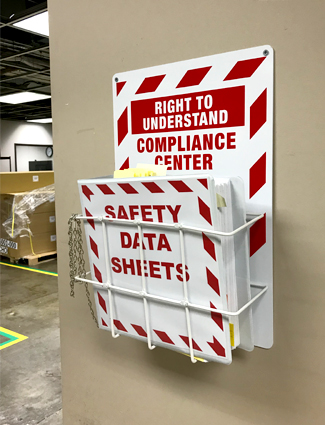Distillery Switches from Whiskey to Sanitizer
03
February,
2023
2 MINUTE READ

In the spirit of service, a local distillery recently made the switch from producing its popular whiskey to pumping out batches of hand sanitizer. The transition was mostly smooth for workers, since the facility was already set up to safely handle high proof ethanol (and, no, you can't drink this hand sanitizer). When facilities change up their production processes, whether it's a minimal or drastic shift, it's important to re-evaluate safety needs. With attention, most workplaces can easily stay on top of chemical labeling, safety data sheets, and other elements of hazard communication.
Changes in the Workplace
Switching from whiskey to hand sanitizer wasn't too difficult for Oregon Spirit Distillers, but there were logistics that were completely different than normal. "We're making as much as we can with the products on hand," said Shelly Hopson, Oregon Spirit Distillers operations manager. The company began the process on March 18 and since is full steam ahead. "We're increasing production. It certainly wasn't as simple as switching containers or changing a few things. Hand sanitizer is a much different product."
Hopson and her crew spent a week or so working on formulas. Once the formula was just right, the team switched to much larger-scale production. The company also had to source the ingredients and supplies it didn't have on hand ? including additional nitrile or latex gloves. A simple call out to the community, and the distillery had hundreds of safety gloves and was able to continue to keep the sanitizer flowing. The effort was worth it.
"For us, I think it was still being able to put out a product we could be proud of, just as we are with our normal spirit production," Hopson said. "We wanted it to be something people were happy to use, and not just had to use. We've had a great response. We've got a line at the door most days." Oregon Spirit Distillers are currently giving away 8 ounces for free to those who bring their own container.
Mitigate Chemical Hazards

Oregon Spirit Distillers is among many manufacturers using their skills and resources to step up health and safety worldwide as the coronavirus pandemic continues. Employers and employees have the right to know the hazards posed by chemicals in their workplaces, and to understand the precautions they need to take to protect themselves. These rights are the motivation behind OSHA's Hazard Communication Standard, also called HazCom 2012.
Aiming to prevent a catastrophic release of toxic, reactive, flammable, or explosive chemicals, OSHA's Process Safety Management regulation in 29 CFR ?1910.119 goes further. It requires companies using particular hazardous materials to conduct a process hazard analysis, and to develop safe work practices and training to control the hazards identified. Here are a few ways changing facilities can stay on top of workplace safety and processes change around chemicals.
- Ventilation: Workers need fresh air, especially when using volatile chemicals.
- Chemical labeling: Whether introducing new chemicals or using chemicals typical to the work environment, make sure workers read, understand, and follow labels on containers. Follow OSHA chemical labeling requirements when creating labels and labeling secondary containers. Keep safety data sheets up to date.
- Personal protective equipment: From gloves to safety glasses, be sure to have PPE on hand that will protect workers from the hazards they're exposed to, without introducing new hazards.
Now more than ever, it's important to be diligent about workplace hygiene and safety. Making sure chemical safety labels are intact and up to date is one proactive step workplaces can take to keep workers safe. Store all chemicals safely, considering the temperature and other possible concerns. Go over workplace safety plans with workers on a routine basis. Before workers use any new chemical, train them on the hazards involved and appropriate safe work practices, including how to handle spills and emergencies.
Get an overview of OSHA's chemical labeling rules, elements of a HazCom 2012 label, and how to meet requirements in our free GHS/HazCom 2012 guide.
RELATED RESOURCES

Starting and Sustaining a Safety Program
Creating a safety plan, updating, and maintaining takes time and dedication. In the past year, many ...
Read
Crucial Steps to Reduce Lockout Tagout Violations
Though simple and effective, lockout/tagout is a frequently violated workplace safety standard. Safety ...
Read
OSHA Lines Up: Time to Tackle Safety
OSHA is set to investigate businesses with high rates of occupational injuries and illnesses. Workplaces ...
Read.png)


